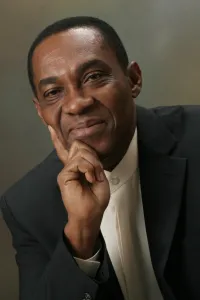The Me Mastery Blog
Take Actions That Change Your Life For The Better!

Why I Don’t Believe In Leading by Polls – And Neither Should You
In today’s world, leadership is too often confused with popularity. Managers are frequently advised to "listen to the team," "follow the data," and "make decisions based on consensus." While there’s value in gathering input, I reject the idea that leadership should be determined by polls or by a vote. That’s not leadership That’s management by committee. And from my experience, that approach often leads to indecision, mediocrity, and a lack of true vision.
Poor is the leader who spits up in the air to see where the wind of popularity is blowing and then uses that to shout “follow me.”
I believe leadership is about having a vision and the courage to execute it. A leader must rely on insight, experience, and inspiration to guide their decisions. Your role as a leader is not to chase popularity but to steer your team toward a goal they may not yet fully understand or appreciate.
Vision First, Then Consideration
When you make decisions, start with your own understanding of where the team or organization needs to go. That ability should come from years of experience, a deep understanding of the business, and a clear vision of what future success should look like. Don’t sit around waiting for people to validate your instincts. Instead, move forward with conviction. Only after formulating the direction should you take the time to consider the perspectives and concerns of your team. “This is where we are going… what are your ideas…” Your final decision can then be made after their input.
That’s where leadership and management differ. Managers focus on keeping people comfortable. Carefully examine history’s greatest leaders. They led from the front… The made decisive decisions. And yes… they had ‘input’ from ‘advisors’. Leaders take people where they need to go… where the team needs to go… where the organization needs to go… even if there’s resistance along the way.
The Danger of Leading by Polls
When a leader relies too heavily on consensus, decision-making slows to a crawl. Worse, it dilutes bold ideas into safe, mediocre choices. How often have you seen a groundbreaking idea get watered down because too many people had to weigh in? Visionary leadership doesn’t happen by asking, “What does everyone think?” at every step. It happens when a leader knows where they’re going and helps others see why that direction matters.
That’s not to say that you should ignore my team. Far from it. listen, but don’t abdicate your leadership responsibility. Your role is to absorb feedback, filter out distractions, and move forward decisively. The best teams don’t need a leader who constantly asks for approval. They need someone who inspires confidence through purposefulness, decisiveness, clarity and action.
But… Bold Leadership Requires Courage
True leadership is often uncomfortable. If you’re waiting for universal approval before making a decision, then you’re not leading – you’re following.
Again, it is worth restating that the most successful leaders in history – whether in business, religion, politics, or social change – didn’t take polls before acting. They made difficult, sometimes unpopular choices because they believed in something greater than temporary comfort. They understood that leadership is about seeing what others don’t and having the courage to act. They also had the ability to inspire others to their point of view…
So, if you want to be an effective leader, don’t get caught up in consensus-building. Define your vision, trust your instincts, and lead with conviction. Your team may not always agree with you – but in the end, they will respect and follow you.
Yes… This Might Be A Dangerous Idea
While leading primarily by vision and conviction has its strengths, it can also be risky if not balanced properly. Here are two potential dangers of this approach:
Risk of Blind Spots and Resistance – A leader who prioritizes their own vision above all else may unintentionally overlook critically important insights from their team. This can lead to resistance, disengagement, or even a failure to recognize flaws in the plan. Without some level of buy-in, execution can become difficult, and employees may feel undervalued or unheard.
Potential for Arrogance and Poor Decision-Making – Relying too heavily on personal insight and experience can create a dangerous echo chamber. If a leader dismisses too many perspectives, they risk making decisions that are out of touch with reality or unsustainable. A lack of adaptability can lead to strategic missteps, missed opportunities, or preventable failures.
The key is to strike a balance—leading with vision and confidence while really listening and being open to constructive input.
The True Measure
The true measure of a leader is one who first has a powerful vision and is then able to inspire their followers not only to embrace the vision… but bring it to fruition – in some cases, even long after the death of the leader.
Can you think of any historical leader whom that describes? Yes? Well… they didn’t lead by committee. They didn’t lead by consensus. They didn’t do polls. They didn’t hold a ‘caucus’. Instead they taught. They informed. They inspired. They stood up and led from the front… taking risks and demonstrating their faith and belief in their own vision and mission.
If you have been elevated to a leadership position… You should trust yourself… Trust your ideas… Believe in your ability to lead the team… And, balance those with being open and listening.
Yep… You must lead from the front…
© 2025 All Rights Reserved - Dr. Marcus Mottley

